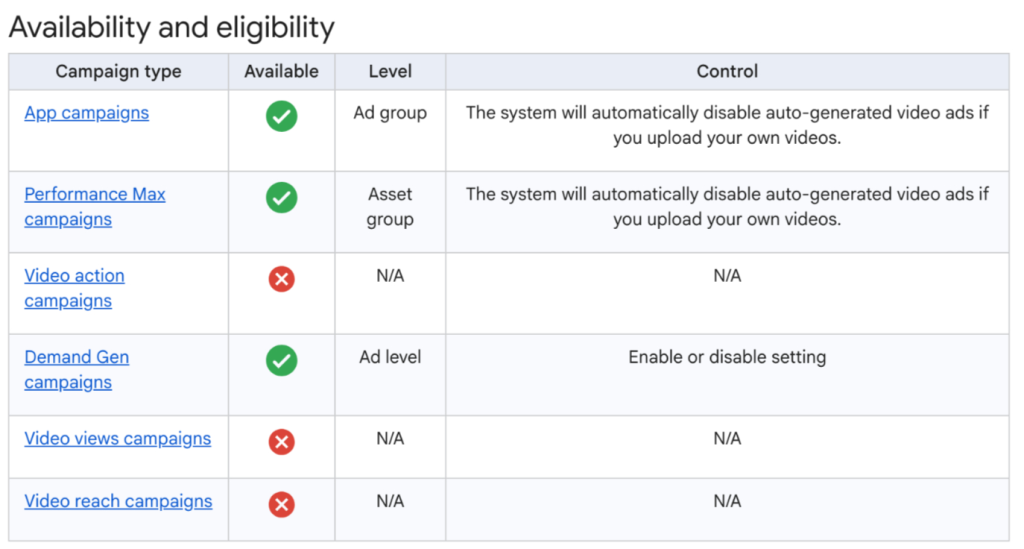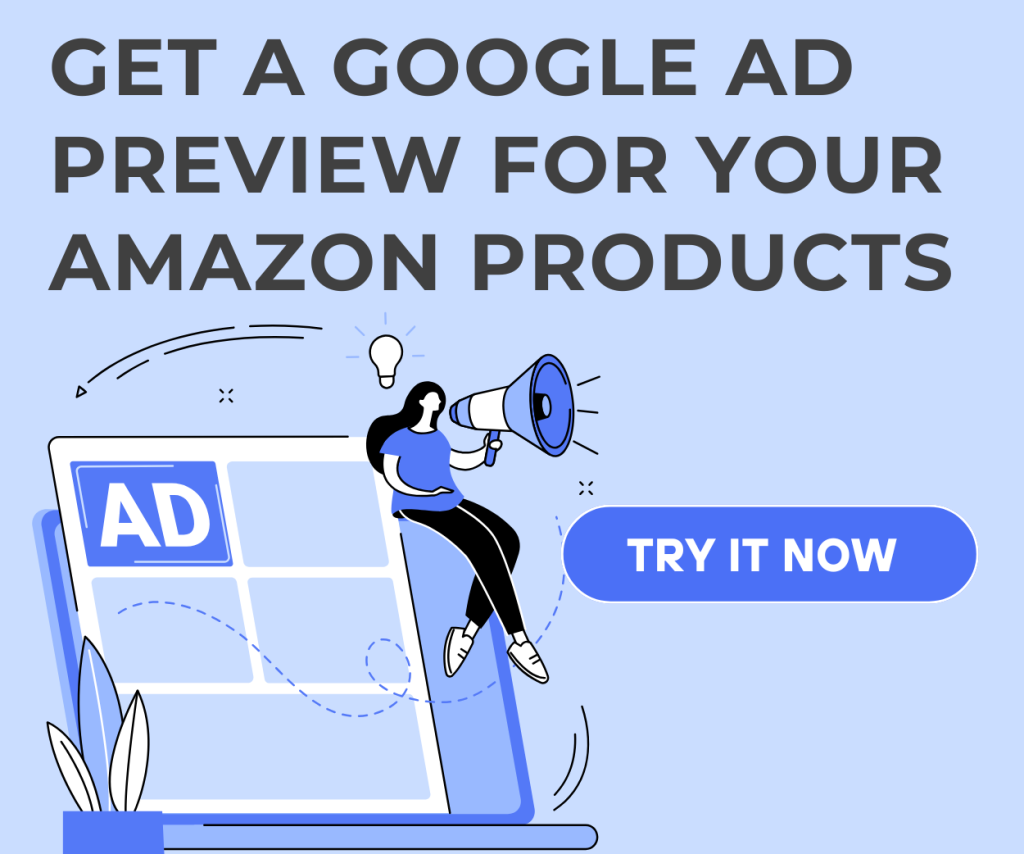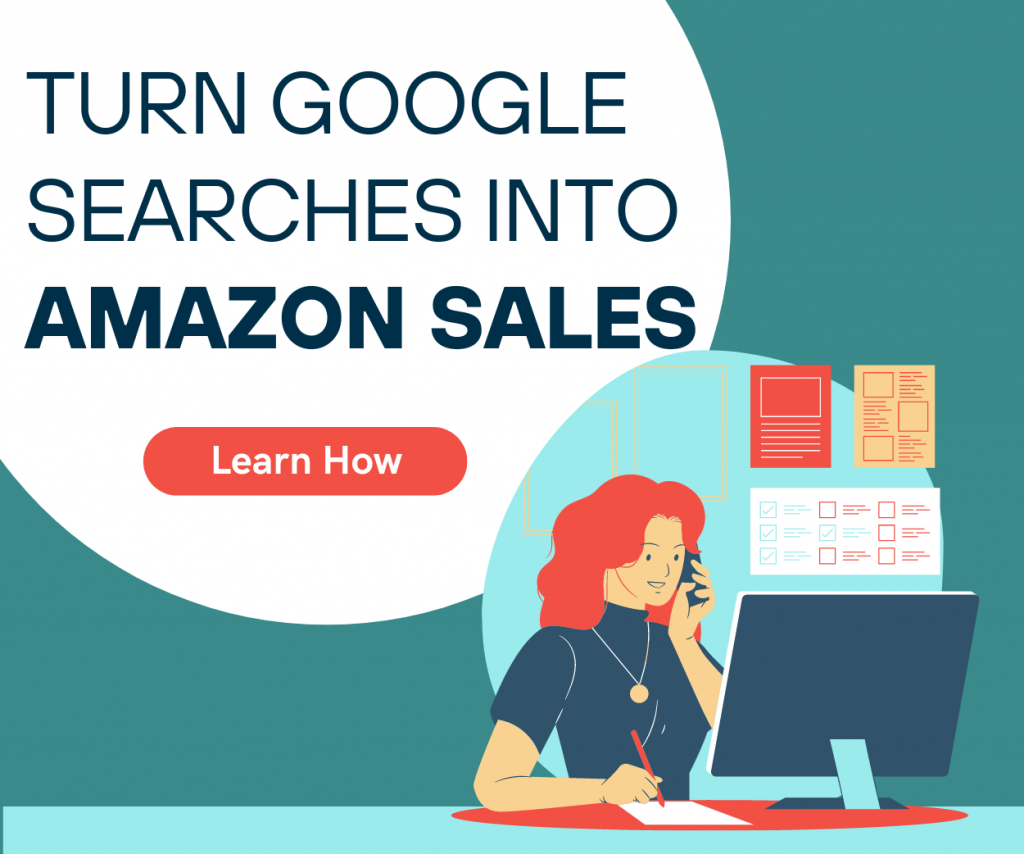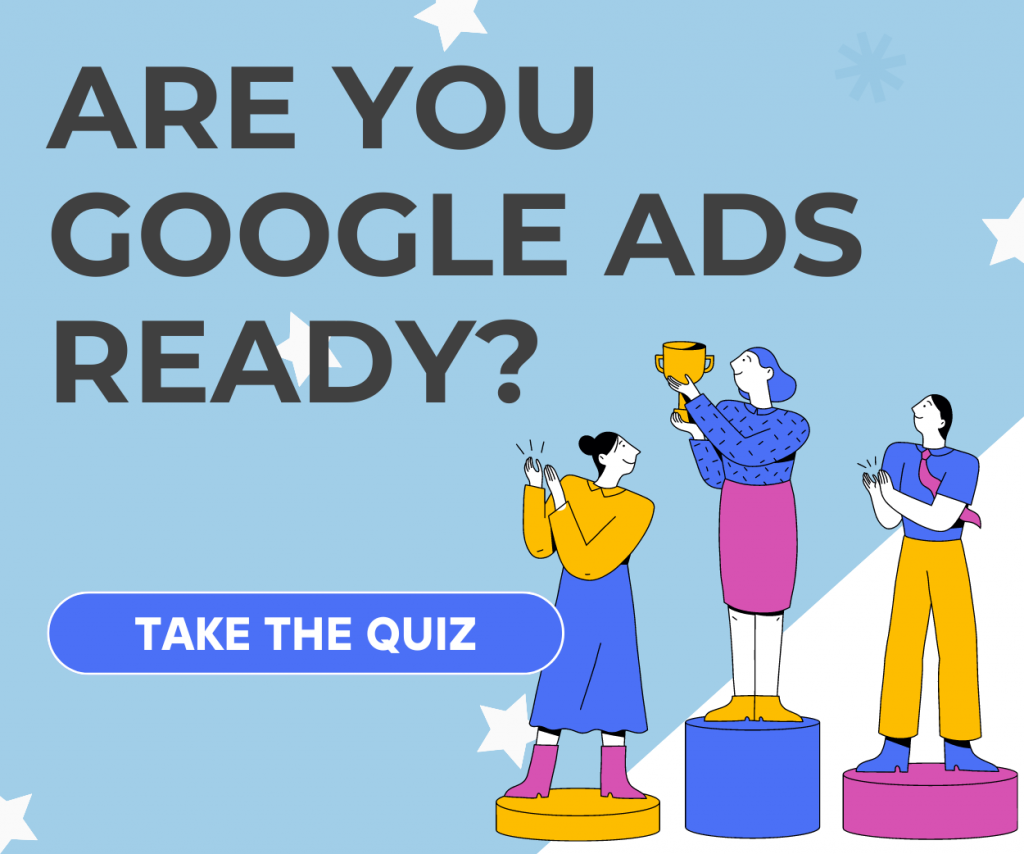Advertisers are constantly navigating a landscape where platforms are making subtle yet significant changes that reduce our control. These changes or dark patterns can shape how advertisers manage their campaigns and influence performance in ways that aren’t always transparent. During this week’s PPCChat session, host Julie F Bacchini have unpacked what this means for PPC professionals and why awareness of these patterns is more critical than ever.
Here is the article which inspired this topic: https://searchengineland.com/google-ads-to-auto-generate-videos-from-existing-demand-gen-image-ads-463532
Q1: What do you consider to be a “dark pattern” used by platforms?
How are you defining “dark pattern”? @revaminkoff
I consider anything that a platform does that is tricky by design to be a dark pattern. So for example when they make default settings best for them like geographic settings or something like that. @NeptuneMoon
Or when it is really hard to find where to change a setting like automatically applied recommendations as an example. If I have to click through 3 levels and only use the 3 little dot menus to do it? Dark pattern. @NeptuneMoon
Hidden settings (the setting to turn off automated assets comes to mind), automated assets themselves (we should have to opt in to these, they should not be turned on by default), spending on channels we don’t want – thinking of the setting in Meta where they’ll spend 5% of your budget on platforms you opted out of..@beyondthepaid
Default Opt-Ins (Location Targeting, etc.) Nudges to auto-apply/best practices for all accounts. Making things that are beneficial for the revenue of the platform more visible and granular control hard to find using UX/Psychology, etc. Nudge & Sludge. Trust the algorithm….@alimehdimukadam
Hidden settings 100% – like person physically in a location vs. person “interested in” a location. also auto apply recommendations @revaminkoff
This is from the Google Ads “help” document on auto-generated video assets. Note what it says – you can only opt out if you supply video assets for PMax for example. @NeptuneMoon

Another one is having to do 2FA just to change a budget. @beyondthepaid
Yeah, the algorithms can auto-apply and increase bids/budget. But if we do it – confirm your identity…@alimehdimukadam
I think there are 2 categories:
- Intentionally misleading (bad UI that manipulates behavior)
- Intentionally profiteering (e.g. Demand Gen auto-video creation)
The former is a big no-no for me, and I think (hope) most consumers can ID and avoid these manipulations. The latter should also be identifiable for advertisers/ad-adjacent folks. In the case of Demand Gen, it’s the same story of Google attempting to monetize (currently) underutilized inventory. They’ve sunsetted VAC, and now are semi-forcing advertisers back into video inventory through Demand Gen. @teabeeshell
@teabeeshell It was also frustrating that they sunsetted VAC… though profiteering, to your point.. @revaminkoff
Blatant cushion shaking.. @beyondthepaid
In Google’s defence, I see many underdeveloped Demand Gen campaigns. For whatever reason, YouTube Channels remain grossly neglected by brands, often in favor of IG/TT. When advertisers (en masse) put forth Demand Gen campaigns without any/enough video assets…Google does shady things like this. @teabeeshell
I also think that there needs to be space still for non-video image-based campaigns that get a shot at all the inventory, say PMax does. Not everything needs video, nor wants to manage it. BTW, if you want to opt out of the Demand Gen auto-creating video, you have until the 31st to do so. @NeptuneMoon
@NeptuneMoon – These settings in Demand Gen afford a remarkable amount of control. You can basically mix and match to your heart’s content. @teabeeshell

YT is valuable when used correctly – I just published an article on Search Engine Land about that today. It’s the auto-generating I don’t like. @beyondthepaid
But Demand Gen also worked really well when it was Discovery and didn’t allow Video Assets – so all of these “upgrades” Google is making to allow “more assets” don’t necessarily help. I love YT but it’s not the same as a carousel Discovery / Demand Gen ad — and they both have their place..@revaminkoff
It’s good for Google to be able to put ads in the most places from the greatest number of campaign types. Is it good for advertisers? Maybe, maybe not…@NeptuneMoon
It does concern me that this SEL article is the first I’m hearing about the autocreated video assets — even when we have clients who will be affected and just met with their reps yesterday…I think Google not telling advertisers about changes might be the ultimate “dark pattern”..@revaminkoff
@revaminkoff – You can create Demand Gen campaigns sans video, see above SS..@teabeeshell
We will have to see how well Demand Gen does if you don’t choose all the options too. Just because you can do it a certain way does not always mean it will perform well, as we have seen before. So test and see! @NeptuneMoon
A lot has been said, but for me: @Ichasse
- hiding settings where you could turn off certain things (example: location you have to click another button to select in or interest in, another is expanded links, etc). When they hide it, then it means it makes them money and probably not you.
- The constant increases in CPC costs for no reason.
- Hiding search terms by using privacy as your shield, so we don’t question it.
- Changing match types.
- Prioritizing certain campaign types.
@teabeeshell 100% – but my point is that those do in fact work well and differently, so Google trying to auto-add/create videos is frustrating. @revaminkoff
Auto-select features could be include for novice users who don’t know better. Usually, dark patterned are any design that makes it harder for the user to pick the “right choice” that won’t waste their money..@duanebrown
Are there any Microsoft-specific “dark pattern” elements you’d like me to elevate to our product team? @navahhopkins
@navahhopkins not a dark pattern per se, but when importing campaigns from Google, I noticed a few issues @alimehdimukadam
- Negative KW List didn’t get imported
- Ended up targeting the entire state in location targeting (could be mismatch of different location targeting settings between MSFT & Google – radius, etc)
Q2: What is a particularly egregious example of a “dark pattern” used by a platform?
I hate the ones that basically say, “Well, you know other advertisers tried this and performance was bad so you should not choose this option” Warnings (not alerts, but warnings) in Google Ads Editor for things are just account choices. Not things that will make your ads get disapproved or not serve. @NeptuneMoon
Perhaps the oldest that comes to mind is Google’s policy of spending up to 2x a set daily budget, evening out over 30.4 days. This makes smaller budgets more difficult to control, erodes at the faith (in Google Ads) among less-seasoned brands, and creates (IMO) an unnecessary amount of volatility in campaign performance. @teabeeshell
Third-party Sales Reps masquerading as strategists for growth and sending emails, reaching out to clients directly. Nothing beats this dark pattern..@alimehdimukadam
On Google, Advanced Location setting is bad one. If you don’t do an extra click or two, could have your ads showing to the wrong people. @duanebrown
How about when the auto-applied recommendations were in practically a totally different UI than regular old Google Ads? @NeptuneMoon
For Google, it is the reps calling clients and telling them their account is not being managed well (big one). I know it is Google’s fault in how they structure their pay for reps, so their goals are aligned with making the advertisers go against the very folks who are trying hard to do the best thing for them and not Google. The other one is the simple lie that all the search terms need to be hidden due to privacy issues. We all saw our search term reports previously, and extremely few search terms would have ever triggered privacy concerns. Funny how this change corresponded with the change of match types….@Ichasse
And ones that warn you that you will “decrease your reach” when you do things like add geo parameters or bid caps or choose a more tight keyword match type. Why yes, that is what I want, thank you. But they make is sound SCARY for those who don’t know better. @NeptuneMoon
Alerts and warnings and pop-ups for doing things that give you more control over the account is pretty high up on my list, as has been said above. .@revaminkoff
Auto opting in to things like expanded targeting is pretty egregious too..@beyondthepaid
@teabeeshell Yes, I always forget the simplest one of just having a monthly campaign budget instead of the convoluted daily spend where they have freedom to do what they want and you have to do the 30.4 x daily spend. Thanks for reminding how stupid that feature is @Ichasse
Auto opting into being able to edit visual assets was a super frustrating recent ones. @revaminkoff
I am also automatically skeptical of anything that promises “better results at a similar cost” with not more than that. Just a “trust us, it totally will…”@NeptuneMoon
Also, removing more of the category placement exclusion options on the display and YT side — that has been beyond frustrating. @revaminkoff
@revaminkoff Facebook is terrible about this along with the audience stuff. Everything is more and more hidden via multiple clicks just to manage your ads properly. This question could just be things that really piss you off! @Ichasse
I mean, anything that is auto-opted in counts as a dark pattern to me. @NeptuneMoon
@Ichasse It’s a decent part of why I no longer advertise as much (or recommend advertising as much) on Meta — and when I’m teaching it, and people are asking how do I make this change, I want to say well, what version are you using and what type of ad are you running because it’s REALLY well hidden…@revaminkoff
Display expansion should be illegal…@Chriskostecki
Q3: Do you have any standard practices that you use to try to make sure you don’t run into issues from platforms’ “dark patterns”?
We have several elements in our QA process to check for these hidden settings when we launch new campaigns. @beyondthepaid
I also have a list of things that I check if I am taking over an account, and set up/turn off if I am building new things. Top of those lists is anything that is auto-generated and definitely anything that is auto-applied! @NeptuneMoon
Unfortunately, you cannot really create an SOP, because they are constantly changing the location where you can make settings changes. You know someone in the background is saying, by moving it here we had a 20% increase in folks who kept the settings the way we wanted them. It ends up being on us to really hunt down the settings or ask folks. Thankfully, our community is very helpful in this regard if you ask on any of the platforms, someone usually has an answer for you. @Ichasse
I thoroughly read every Google-issued email + any linked support articles. From there, I go to Twitter/X and other forums to hear what people are saying. As obnoxious as this is, it helps me stay in the know of what’s really going on with changes. From here, I can preemptively alert clients as to the pros/cons, controls remaining, and inevitabilities that may arise from said changes. @teabeeshell
@Ichasse I don’t like to think they are purposely doing this stuff because that just makes me mad, but it is hard to believe that some of the UI choices are not intentional, as you described, to get those not paying close attention and the revenue that comes from that. @NeptuneMoon
QA is really important, as is auditing regularly. But agreed that it’s hard to put them in a standard SOP because the locations are constantly changing. I think it’s more about making sure you’re asking the right questions and going through the right logic when setting up your campaigns in the first place. @revaminkoff
I think another basic practice that we all probably do is to be in the accounts regularly to make sure nothing is going haywire, and/or using scripts or alerts to have the system tell us when something weird occurs. Then investigate @NeptuneMoon
You know deep down the changes are intentional. Just like making the “unsubscribe” button in emails the smallest font possible and far below the email. @Ichasse
Audit checklist + scripts for automation. Process repeats monthly..@alimehdimukadam
Double-check your work within a few hours of launching a campaign. Make sure ad, budget and all campaign settings are what you want. @duanebrown
Don’t get me started on when I unsubscribe to an email and get a reply of “yeah, it might take 6 weeks to be removed” like it is a print catalog. I can’t roll my eyes any harder. @NeptuneMoon
Unfortunately, I have been in those types of discussions with companies where they applauded changes like that. Nobody will ever admit to it, and it is pretty dark, but it happens.@Ichasse
If you have to trick your customers or potential customers into continuing to hear from you/engage with you, it is time to examine your entire business model, IMO. @NeptuneMoon
That is exactly what I said when I heard that kind of talk. I also said if this is the road you want to go down, I am probably not your person to handle this. @Ichasse
Have folks tested asking Gemini/Copilot to mitigate “dark patterns”? @navahhopkins
Could be on me, but I have not and would not know how to if I am being 100% honest. @Ichasse
@navahhopkins I’m afraid I wouldn’t trust it because things are changing soooo much. so it’s not a repeatable process necessarily. @revaminkoff
Not everyone commits to a product on the first exposure to an ad. I remember looking at some data a few years ago that showed it could take 16+ exposures (ppc, display, email, etc.) for someone to raise their hand for a high-cost product. @JeffreyHain
If we’re defining dark patterns as “hidden settings” in theory asking how to do a thing or checking if a thing is correct, you should be able to mitigate. I was thinking about Gemini and Copilot in platform..@navahhopkins
Only if the info you get back is accurate or up to date. And we should not have to ask AI to just be able to find hidden/hard to find settings! @NeptuneMoon
My big question back would be “why should it be so complicated that I have to ask the LLM where to make a change”? @Ichasse
@NeptuneMoon software has search functionality…@navahhopkins
@navahhopkins Not in platform, but I put Gemini in deep research mode during this chat and here’s what I got. @alimehdimukadam
It’s a common feature (especially when new features are being added all the time). It’s helpful to know that isn’t useful Or at least perceived as useful. @navahhopkins
@navahhopkins I will absolutely use the search function if something gets moved and I can’t figure out where it went! @NeptuneMoon
The ad platforms are designed by business folks and engineers vs. actual advertisers who use the tools (how I feel with the changes I have seen). The most important group, which is the users, are left out of the process and my tin foil hat side of me believes that is “mostly” on purpose. @Ichasse
Maintain as much control on targeting and messaging, they can optimize everything else. @Chriskostecki
The engineers will tell you, it is right here, and the legal folks will say we have that option even if it is buried under 2-3 clicks to find it. @Ichasse
Q4: If you could wave a wand and make a new rule about “dark patterns” what would it be and why?
New things shall not be automatically OPTED IN. Convince me to opt in! @NeptuneMoon
Require the ad platforms to (have advertisers) opt-in to new features. Simple. @Ryansappington
I think (any) rationale other than:
X of our top-spending customers have found a 12% CPA reduction and a 7% ROAS lift with these settings..would be helpful. Any context as the the “why” would help advertisers see something for what it is, hopefully, and avoid, if possible. .@teabeeshell
No auto-opt-in features and don’t hide features behind multiple clicks. It should be right there with the other settings. If you are hiding it, then the fact of the matter is you don’t want people to find it and use it. @Ichasse
Language regarding settings should be neutral/factual only. Not fear mongering or everyone else is doing it type language. @NeptuneMoon
Beyond opt in (which I agree with), I’d love to see more accessible design (larger “advanced settings” button, etc) @navahhopkins
Hard to imagine a world some of us advertisers were still able to fully utilize ETA’s bc that group of folks decided they didn’t want to swallow the (RSA) blue pill. @Ryansappington
I honestly think most platforms should have a regular mode that has fewer choices/inputs for those who want the system to do it and an advanced mode for those who want or need to have greater and more specific input for their campaigns. It does not have to be one or the other! @NeptuneMoon
No ‘smart’ campaigns and default pMAX setup etc for new accounts/advertisers (they end up burning money) @alimehdimukadam
Bring back blog announcements, things are changing with no mention until we find it out the hard way. @Chriskostecki
Also, most of new dark patterns are for newer formats and placements which tend to serve network needs more the general client needs, I stick with what is proven and works, unless there is specific need being met with a new format, I will wait for it to develop and see what in the shadows comes to light. @Chriskostecki
Make them illegale. @duanebrown
Q5: How do you stay informed about new “dark patterns” in ad platforms? And do you find it difficult to do so?
I follow a lot of smart PPCers on platforms like Twitter, LinkedIn and of course in our community. @NeptuneMoon
PPC Chat, X/Twitter and Help Docs..@alimehdimukadam
Also regularly read Search Engine Land, Search Engine Journal, Social Media Today as well as the posts from the platforms themselves. Marketing O’Clock podcast is also a go to to keep up. @NeptuneMoon
I feel like they are so ubiquitous these days that I stumble across them in my average workflows more than I find them with enough advance notice to act. Beyond that, social platforms and emailed announcements. SEL is stellar as always, and their succinct articles are helpful just-enough-info resources for me. @teabeeshell
I follow our great PPC community mostly on Twitter, and we have our weekly chats here, and that helps. I have also been setting up campaigns for decades, so some of my work is almost second nature. If I don’t see the option, I do tend to click around until I find it. @Ichasse
Linkedin has been the most reliable recently, besides being in platform and seeing a new shadow scurry in the periphery. @Chriskostecki
All of the above – PPC Chat, Twitter, LinkedIn plus the industry pubs like SEL..@beyondthepaid
I also love how we will alert each other to weird things we see while working in accounts too. And not be afraid to post something like “I thought I was losing my mind because I could not find XYZ” You can also feel like you’re losing your mind when things are one way in one account you’re working in but different in another. When functions are not in 100% of accounts. That is always super fun! @NeptuneMoon
I can’t imagine doing PPC without this community! @beyondthepaid
I’d also like to give a shout-out to Ginny on the Google side for the transparency and empathy she brings. @navahhopkins
I honestly don’t know how we would deal with some of the things we have to without Ginny to help us! @NeptuneMoon
@navahhopkins It’s good to have you in a similar role for Microsoft Ads too. @NeptuneMoon
Both Ginny and Navah are invaluable! @beyondthepaid
For what it’s worth, I share the feedback from this community as part of my weekly round-ups and the discussion around language in UI caused product to change directions. Candid feedback on how we can make your lives better is really appreciated..@navahhopkins
With Meta, remembering what your options are for turning off things. If you don’t see the option anymore, Meta moved it somewhere else in the UI..@duanebrown
PPCChat Participants
- Julie F Bacchini @NeptuneMoon
- Navah Hopkins @navahhopkins
- Lawrence Chasse @Ichasse
- Ali Mehdi Mukadam @alimehdimukadam
- Reva Minkoff @revaminkoff
- Chris Kostecki @Chriskostecki
- Melissa L Mackey @beyondthepaid
- Travis @teabeeshell
- Duane Brown @duanebrown
- Jeffrey Hain @JeffreyHain
- Ryan Sappington @Ryansappington
Related Links





Stop the wasted ad spend. Get more conversions from the same ad budget.
Our customers save over $16 Million per year on Google and Amazon Ads.